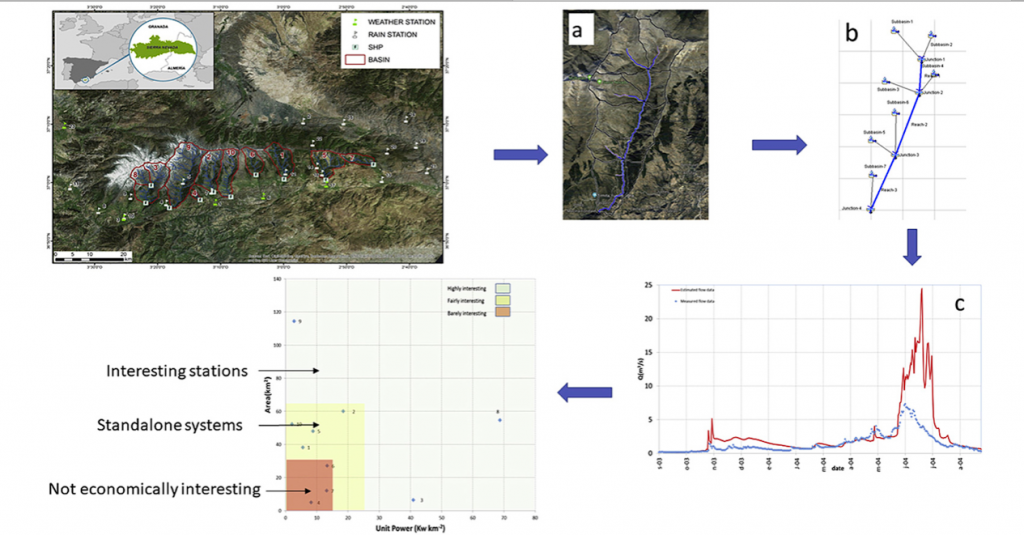Abstract
The Mediterranean region is characterised by a temperate climate and scarce water resources; therefore, minimum flows must be maintained in high mountain basins to ensure the sustainability of the ecosystem. Small hydropower facilities allow for energy utilisation that is compatible with this goal. A methodology has been proposed using historical climatic data to evaluate the percentage of regulation required in a basin according to its surface area and slope in order to guarantee a minimum percentage of energy supply. Two methods for hydroelectric generation by small hydropower facilities were analysed in this case study: dam-toe and diversion techniques. The model has been generalised according to the surface area of the basin and the degree of regulation for application to this climate. Flows were calculated from a 39-year series of climatic data using the hydrological calculation program HEC-HMS and its SMA tool, which is particularly suitable for this type of analysis. The model was adjusted using runoff data available for a river basin gauging station in the Sierra Nevada (Spain). In this case study, the highest basins (above 1100 m and with an area greater than 25 km2) were the most promising. The usefulness of the proposed methodology was illustrated by assessing the effect of uncertainty through a sensitivity analysis varying the precipitation of the area by 20%, both in defect and excess, and all this in different scenarios of channel regulation, from 25% to 100% of it. A model was developed based on the conditions in a Mediterranean climate to evaluate the sustainable use of water resources in high mountain areas for energy utilisation, while considering the cost of regulating the flow and guaranteeing supply to the population. As the main conclusion of this study, basins above 1100 m in altitude with an area greater than 30 km2 are the most interesting for locating SHPs, and if the altitude is lower, basins with an area greater than 60 km2 would be needed to obtain similar results. This research provides a guide for selecting the most suitable basins and heads for the selection of different small hydropower facilities. These considerations are important in many Mediterranean mountain systems, where conflicts often arise between supporters on either side of the debate on renewable energy generation versus the preservation of the ecosystem. Additionally, the main advantage of hydropower generation from an environmental point of view is to avoid the emission of greenhouse gases, which has a positive influence on collective well-being. Go to article
Graphical abstract

Zapata-Sierra, A. J., Manzano-Agugliaro, F. (2019) Proposed methodology for evaluation of small hydropower sustainability in a Mediterranean climate. Journal of Cleaner Production, 214, 717–729. https://doi.org/10.1016/J.JCLEPRO.2018.12.327
